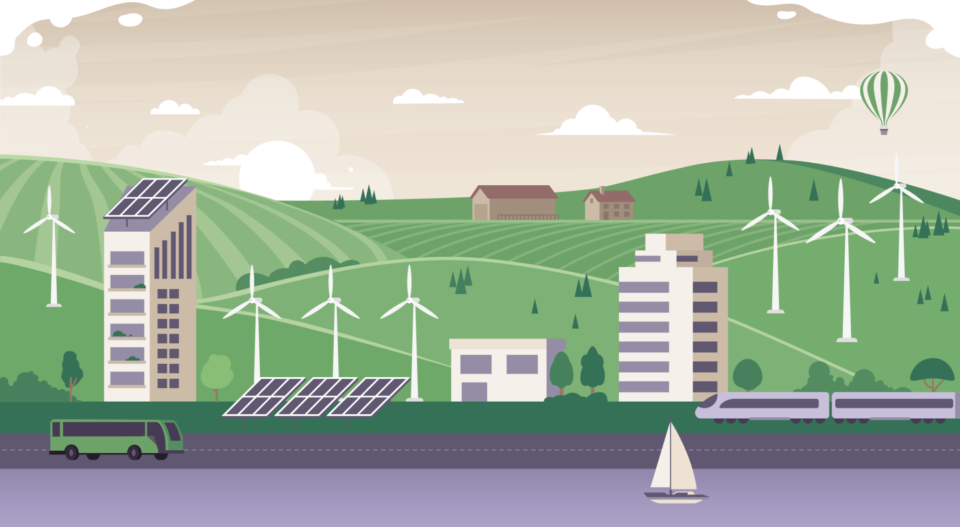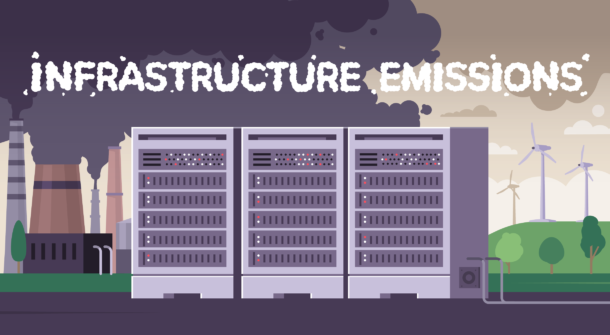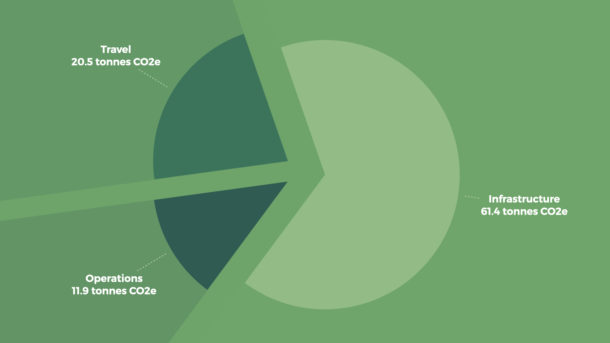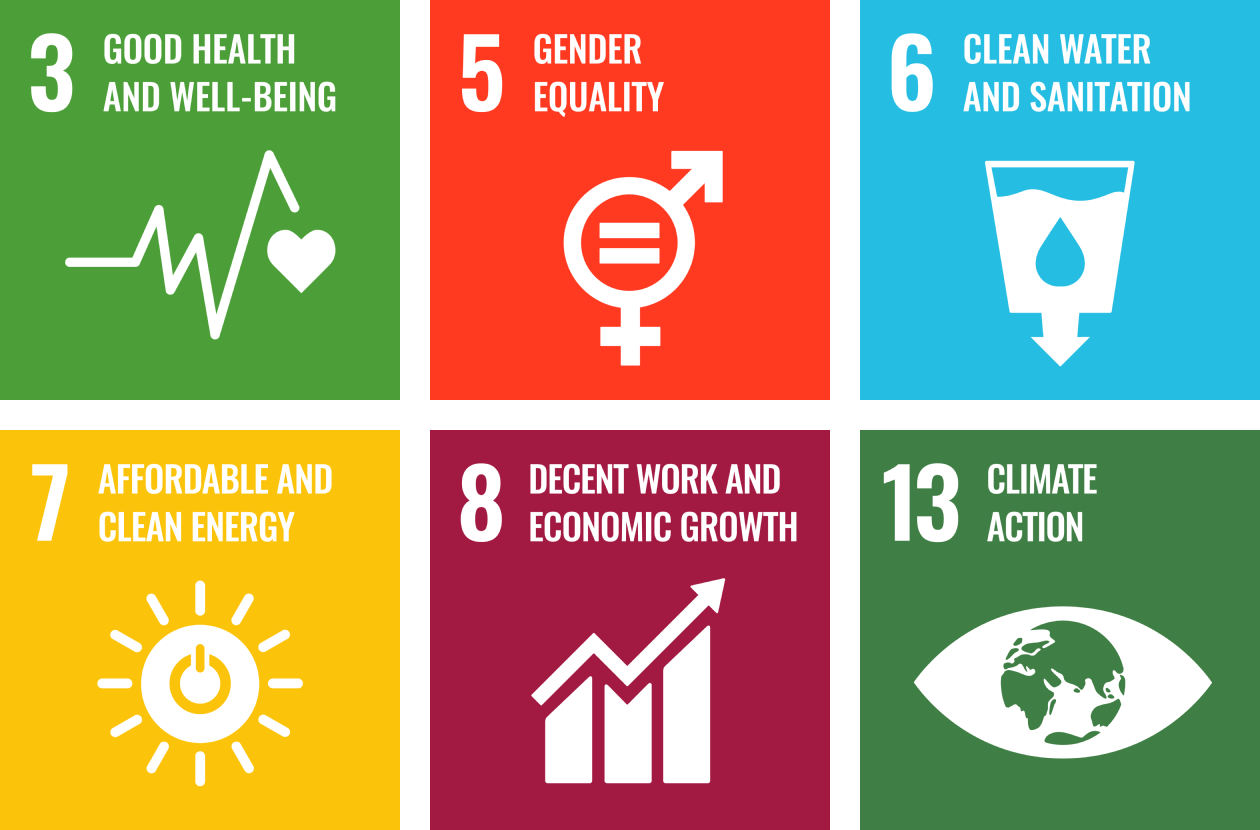
Climate change is real, it’s happening, and human activity is the driving force. At Wildbit, we’ve been thinking of ways we can do our part to help, but before we can plan our response, we first need to understand our impact.
A major part of Wildbit’s environmental impact are the greenhouse gas emissions resulting from our operations. Earlier this year we spent some time calculating Wildbit’s 2019 footprint so we’d have a baseline to measure future improvements against. While our environmental impact extends beyond our emissions, this seemed like the most appropriate place to start.
Calculating an organization’s greenhouse gas emissions can be a daunting undertaking, so it’s important to focus on the areas that are likely to contribute most to your emissions. At Wildbit, we decided that would be infrastructure, travel, and operations.
We’re measuring our greenhouse gas emissions in CO2e or Carbon Dioxide Equivalent. This unit incorporates the global warming potential of a range of polluting gases and converts the amount of each gas into the equivalent amount of Carbon Dioxide, giving us a single figure to track emissions by.
Infrastructure Emissions

Wildbit is a software-as-a-service business, so naturally the servers our products run on are a major source of emissions. We use a combination of our own hardware running in a co-located data center and cloud services from providers like AWS and Google Cloud.
Co-located Server Emissions
Calculating emissions from our own hardware is relatively straight-forward. Our data center operator provides detailed stats on electricity consumed by our server racks. We can use the emission factors published by the EPA to find out the average emissions per kilowatt-hour (kWh) of electricity produced in the region our data center is located. Multiplying these two numbers gives us a reasonable estimate of the greenhouse gas emissions produced by generating the electricity consumed by our server hardware. This isn’t prefect as it excludes our share of the electricity used to run and cool the data centre facility, but it’s a measurable starting point.
An emission factor represents the quantity of a GHG that’s released into the atmosphere for each unit of consumption. For example, on average 0.45 kg of CO2 is produced per kWh of electricity consumed in the US.
Source: Emission Factors for Greenhouse Gas Inventories - EPA (Table 6: Electricity)
In 2019, emissions from our owned infrastructure contributed 61.4 tonnes of CO2e to our footprint, roughly the amount of carbon that 80 acres of US forest sequesters in a year*.
Cloud Service Emissions
Calculating emissions for cloud infrastructure is a different story. Cloud providers like AWS and Google don’t share data we can use to calculate the emissions from our own usage of their infrastructure. Instead we need to research what each provider is doing to reduce the environmental impact of their data centres and then make smart choices about which providers we use. This doesn’t give us a figure to add to our own emissions footprint, but does help to ensure we’re supporting businesses that are serious about reducing their impact on the environment.
Google runs their data centres on 100% renewable energy and is consistently improving the efficiency of their data centres to prevent energy from being wasted. Most data centres use almost as much energy to cool servers and operate the facility as they do to actually power the servers. Google has managed to bring this “overhead” energy down to an industry leading 11% of server energy consumption. It’s one of the reasons we decided to run our new DMARC monitoring service in Google Cloud.
Amazon is working towards powering all it’s data centres with 100% renewable energy by 2030. While they have some ways to go in certain locations, they’ve already achieved this goal in a number of regions. Locating your services in the following AWS regions (when possible) helps to ensure your services are running on 100% renewable energy:
- US West (Oregon & GovCloud)
- Europe (Frankfurt)
- Europe (Ireland)
- Canada (Central)
Source: AWS & Sustainability
Travel Emissions

As a remote team we travel quite a bit. We have an annual retreat where we get the entire team together for a week to hang out and discuss upcoming projects. Add to that travel for conferences and trips to the Philadelphia HQ for planning retreats and there’s the potential to rack up a fairly hefty emissions bill.
Flights
Our primary source of travel emissions comes from flights. Flying is dirty and even though the majority of the flights we take are the slightly less polluting medium haul flights (between 300 and 2,300 miles), all those air miles add up.
Emission Factors for Flights
Short haul (< 300 miles): 0.225 kg CO2 per mile per passenger
Medium haul (>=300, < 2,300 miles): 0.136 kg CO2 per mile per passenger
Long haul (>= 2,300 miles): 0.166 kg CO2 per mile per passenger
Source: Emission Factors for Greenhouse Gas Inventories - EPA (Table 8: Business Travel and Employee Commuting)
In 2019, the Wildbit team made 104 flights for a total of 100,148 miles. That’s the equivalent of flying around the Earth 4 times. All those air miles resulted in 16.2 tonnes of CO2e.
Ground Travel
Next up on our list for calculating travel emissions was to look at all those taxis, Ubers, and train journeys. Again, the EPA’s emission factors provided us with some figures we could use to calculate our emissions, leaving us with the tedious job of sorting through expense reports to see how many miles we traveled by each mode of transport (thanks Julie!).
We decided to split our ground travel emissions into two categories. Private transport (Ubers, taxis, etc.) and public transport (buses, trains, trams, etc.).
| Miles Travelled | Emissions | |
|---|---|---|
| Private Transport Ubers, taxis, private-hire buses, etc. | 1,194 | 525 kg CO2e |
| Public Transport Trains, trams, buses, etc. | 182 | 26 kg CO2e |
| Total | 1,376 | 551 kg CO2e |
This was eye-opening. We clearly have a preference towards grabbing an Uber or taxi rather than using public transport. What’s more shocking is that when we break down our average travel emissions per mile, those Ubers are more than twice as polluting as flying.
| Miles Travelled | Total kg CO2e | kg CO2e per mile | |
|---|---|---|---|
| Air | 100,148 | 16,210 | 0.16 |
| Private Transport | 1,194 | 525 | 0.44 |
| Public Transport | 182 | 26 | 0.14 |
Hotel Stays
An often overlooked, but important component when calculating the footprint of travel emissions is hotel stays. The EPA doesn’t publish emission factors for hotel stays, but fortunately the UK Government does.
Hotel Stay Emission Factors United States: 21.5 kg CO2e per room per night United Kingdom: 17.4 kg CO2e per room per night China: 63.8 kg CO2e per room per night Switzerland: 6.9 kg CO2e per room per night Saudi Arabia: 142.2 kg CO2e per room per night
Source: UK Government Emission Conversion Factors 2019 (See the full data set for hotel stay emission factors)
The Wildbit team spent 184 nights in hotels in 2019, contributing 3.7 tonnes of CO2e to our total travel footprint of 20.5 tonnes of CO2e.
Operations Emissions

Although Wildbit is primarily a remote company, we have an office in Philadelphia which is used by some of the local team and acts as a base for remote teams members when they’re in town. As part of our greenhouse gas inventory, we looked at emissions resulting from electricity and gas usage at our office. We also decided to account for energy loss through transmission and distribution to get a clearer picture of our actual emissions.
| Emissions | |
|---|---|
| Electricity | 6,248 kg CO2e |
| Transmission and Distribution Losses | 294 kg CO2e |
| Gas (for heating) | 5,412 kg CO2e |
This gives us a total footprint for our Philadelphia office of just below 12 tonnes of CO2e.
That’s not the complete picture for Wildbit’s entire operations though. With the majority of our team working from home, we think it’s important for us take ownership of a portion of their domestic emissions too. Some team members also work from co-working spaces or coffee shops and we should factor their commutes into our emissions total. We didn’t have the data available to calculate the impact from our remote team in 2019, but it’s something we’re working on achieving in 2020. We’re starting by sending out regular surveys to everyone on our team to collect data about their energy usage.
Wildbit’s Measurable 2019 Footprint
Wildbit’s measurable 2019 greenhouse gas emissions amounted to 93.8 tonnes of CO2e. To put that into perspective, it would take over 1,500 newly planted trees 10 years to sequester that amount of carbon from the Earth’s atmosphere*.

Activity | Tonnes of CO2e |
| Infrastructure | 61.4 |
| Travel | 20.5 |
| Operations | 11.9 |
| Total | 93.8 |
It’s important to remember that we couldn’t measure everything though, so our true emissions are likely to be much higher.
How We’re Reducing Wildbit’s Environmental Impact

Now that we have our baseline, we’ve started to work on some projects to help reduce our environmental impact.
Offsetting Our Emissions
As a first step towards reducing our footprint we decided to offset our 2019 emissions. We want to be sure we support projects that have a real impact on the environment and the communities around them, so we’ve put together a list of criteria based on six of the UN’s Sustainable Development Goals that match Wildbit’s values and impact areas.

After evaluating 10 different projects offered by Native Energy, Gold Standard, and Carbonfund.org, we decided to offset our 94 tonnes of emissions through a 100MW Wind Power Project in Andhra Pradesh, India.
View our offset credits in the Gold Standard Impact Registry.
Downsizing Our Office
Last year we made the decision to downsize our HQ in Philadelphia. Over the past few years the number of people working from the office has fallen as members of the Philly crew moved out of the city and opted to work from home instead of tackle a longer commute.
We’re primarily a remote company, and while the office was beautiful, we no longer needed all the space. We decided to move to a smaller, dedicated space in Offsite, a co-working facility in Philadelphia. We still have somewhere to meet and work when remote team members are in town, but the move greatly reduced both the financial and environmental cost of our HQ.
In 2019, emissions from our old office were just under 12 tonnes of CO2e. We’re expecting the move to Offsite will drastically reduce our operations emissions in 2020.
Encouraging the Use of Public Transport
A key takeaway from exploring our travel emissions is that we’re bad at using public transport. Grabbing an Uber or taxi when you’ve just got off a long flight is easy and convenient, especially if you’ve landed in an unfamiliar city or country. Sometimes it’s the only option, but we want to find ways of encouraging our team to use public transport when it’s available and safe to do so. We’re still working on exactly how we’ll do that, but it may include:
- Helping to plan out public transport in advance so we’re not left trying to figure out bus routes or subway lines in the moment.
- Pre-paying for tickets so that individual team members don’t have to expense them and wait to be reimbursed.
- Creating guidelines on when it’s appropriate to get an Uber or taxi. (For example, if there’s no public transport available or taking public transport would require more than two connections.)
Migrating More Systems to the Cloud (and Optimizing Code)
While we already run a good portion of our infrastructure in the cloud, we’re making a big effort to move more services over in 2020. While we’re at it, we’re optimizing code and exploring some of the specialised services offered by cloud providers to increase the overall efficiency of our systems and reduce the amount of excess computing power. It’s a good move for the environment and it can save us money too.
Introducing a Supplier Values Checklist
A simple way to reduce our impact is to support other organizations that are conscious of their impact on people and the planet. Every dollar we spend is a vote in favor of a certain way of doing business. We’ve put together a checklist of values we look for in suppliers to ensure we’re working with the right people. This has already prompted us to reevaluate purchasing for some marketing materials and we plan to apply it more widely as the year goes on.
Pulling Back on Physical Swag Shipments
We didn’t measure our marketing footprint in 2019, but after everything we’ve learned so far we don't feel comfortable sending out as much physical swag as we have done in the past. The fashion industry has a huge environmental impact and the emissions from sending all those t-shirts, stickers, and gifts around the world is harming our planet and our future.
We’ve significantly reduced the amount of physical swag we send out and are moving towards digital gifting instead. Using gift cards, funding reforestation projects, and charitable donations to show our appreciation.
For the occasions when we still want to send a physical gift, we’re switching up suppliers to ensure what we do send out has been produced in a sustainable way.
Remote Team Survey
We’ve started sending out a survey to our entire team a few times a year to collect data on where the work from and their home energy consumption. Our goal is to take ownership over a portion of the emissions associated with working remotely so we can get a better understanding of our true footprint.
We Need to Act Fast
With no formal training in conducting greenhouse gas inventories, diving into this for the first time was an overwhelming experience. There’s a lot to learn, and I made plenty of mistakes along the way, but it became much easier once we narrowed our focus to a few key areas. We now have a baseline we can measure future improvements against and we’re continuing to monitor our emissions going forward.
There’s a growing movement of tech companies who are paying attention to the impact they have on the environment. Stripe and Shopify are two high-profile examples, but there’s also a whole bunch of smaller organizations working to get an understanding of their emissions and wider environmental impact. We’re all left with the same tough questions though.
- What’s an acceptable environmental footprint for a software company?
- How do we measure up against other companies our size?
- What’s the best way to become carbon neutral (or negative)?
As more organizations publish their own footprints, I’m hopeful we can establish some benchmarks and share knowledge to provide answers to these questions.
It feels like our industry is finally waking up to the climate crisis, but time is not on our side. In order to limit a global temperature increase to 1.5 degrees Celsius (as outlined in the IPCC’s report on global warming) every organization needs to better understand their impact and take significant measures to reduce it now. We’re doing that at Wildbit and we’ll be sharing more as we go. I’d love for you to lead the effort in your organization too. There are some helpful resources for getting started listed below. Feel free to reach me by email if you have questions. I’d love to hear about your experiences and will help however I can.
Resources
Guides
- Calculating Greenhouse Gas Emissions (B Corp)
- Guide to Greenhouse Gas Management for Small Business & Low Emitters (EPA)
- Guidance on how to measure and report your greenhouse gas emissions(DEFRA)
- Monitoring Water Use (B Corp)
- Understanding Renewable Energy (B Corp)
Emission factors data
- Overview of Greenhouse Gases (EPA)
- Emission Conversion Factors (UK Government)

